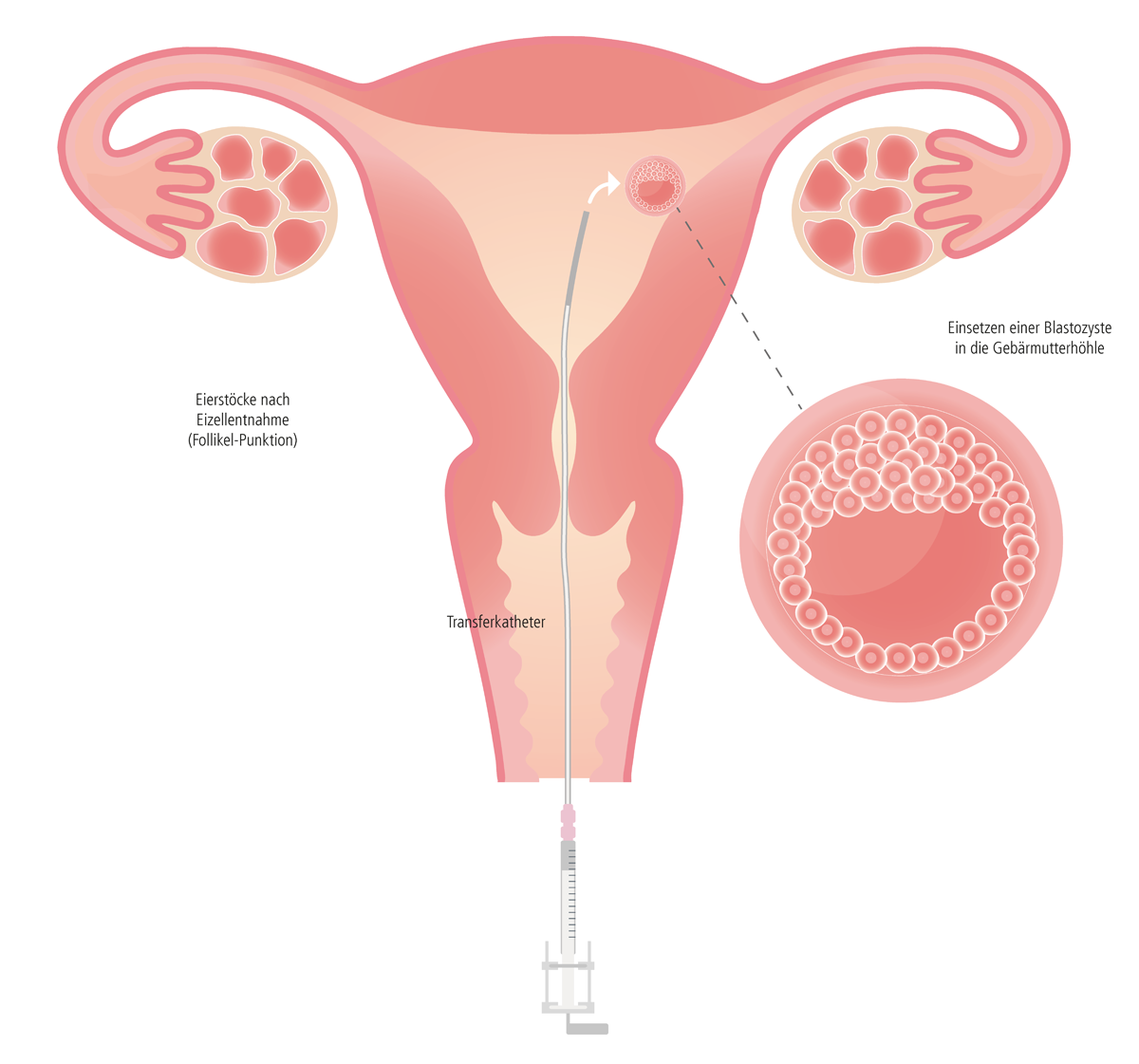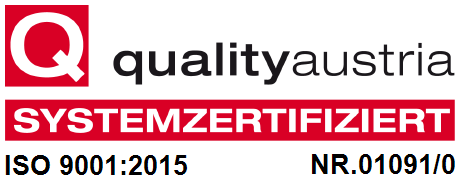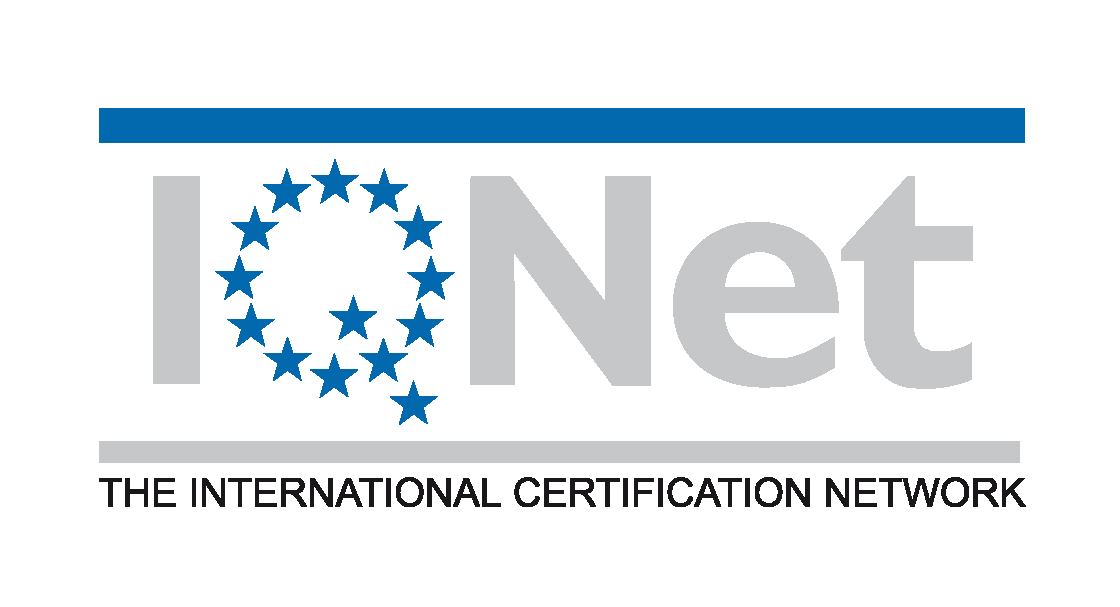Return of the "Egg"
In an ideal scenario, embryo transfer is carried out on the fifth day following fertilization which, after normal conception, corresponds to the time when an embryo has travelled via the fallopian tube to the womb in order to attach to the uterine wall.(See "Blastocyst Culture")
1. Procedure
2. "Single Embryo Transfer"
4. Concomitant hormone therapy
1. Procedure
A thin and flexible plastic tube (catheter) is inserted through the vagina and cervix (cervix uteri) into the womb (uterus). The embryo is pushed through the catheter and is gently deposited in the uterus. The procedure takes only a few minutes and is generally painless. After undergoing embryo transfer, the woman rests for some minutes in supine position and may then go home.
│ © 2022 Next Fertility IVF Prof. Zech • Member of Next Clinics
Implantation of the embryo
The implantation (nidation) of the embryo in the uterine wall is a highly complex process. There are no means to actively encourage or even force implantation to happen. From a medical point of view, this means that one can only try to improve a given situation through the use of scientifically proven methods. During embryo transfer, particular attention is paid to placing the embryo 0,5 - 1 cm below the highest point of the uterine cavity. This has proved to be the most suitable site for an embryo to implant. A precondition of this approach, however, is the exact measurement of the length of the uterine cavity, since the condition of the reproductive organs may vary considerably from one woman to another. In addition, it is important to stimulate the proper build up of the endometrium by means of individually tailored hormone treatment. However, the woman can at least try not to interfere with embryo implantation, which can be achieved by adopting a healthier lifestyle. A stressful departure after the embryo transfer and jerky movements (fast lifting of heavy loads) should be avoided. Moreover, we advise you against flying long-haul after the transfer. In addition, smoking or excessive alcohol consumption may have a negative impact on the outcome.
Pregnancy test
Two weeks after the embryo transfer, a pregnancy test can be taken which uses the detection of hCG in urine. Continue to take the prescribed medication in full compliance with your therapy plan. You should, under no circumstances, stop taking your medication without first consulting us. Regardless of whether the pregnancy test comes back positive or negative, the couple should, in any case, get in touch with our IVF center. Subsequently, we will discuss with you how to proceed, e.g. appointment for blood sample, further medication, next check-up appointment etc.
2. "Single Embryo Transfer"
In order to reduce the risks and complications (for both mother and child) of multiple pregnancy, we from Next Fertility IVF Prof. Zech clearly prefer, wherever possible, to perform a so-called Single Embryo Transfer (SET). Optimal conditions have to be created as early as in the run up to the treatment, in order to allow for the transfer of a single top-quality embryo with high implantation potential. This requires a good deal of experience, optimized stimulation protocols, individually tailored medication as well as the use of the latest laboratory technology.
3. Concomitant hormone therapy
Around the time of oocyte collection, an antibiotic is administered for some days in order to reduce as far as possible the risk of infection, mainly to prevent any bacteria that may be present from being "pushed up" into the uterine cavity during embryo transfer. Following follicular aspiration and subsequent embryo transfer, the luteal phase defect (corpus luteum insufficiency) which is a naturally occurring phenomenon in IVF treatment has to be corrected by the administration of progesterone up to when fetal heartbeat can be detected. Progesterone administration is then continued via the vaginal route until the 12th week of pregnancy. In some cases, however, it may be useful to take progesterone until even later in pregnancy. Any such prolonged use of the medication requires prior consultation with your treating obstetrician. Additionally, estrogen offered in tablet form (Progynova) must be taken for a certain period of time (even though elevated estrogen levels are usually very common following ovarian stimulation). This is the only way to maximize the therapeutic success. Thyroid hypofunction requires the intake of thyroid medicines in the form of tablets throughout the entire pregnancy (Eltroxin, L-Thyroxin, Euthyrox). Details should be discussed with the treating gynecologist. Additional medicines may be needed to minimize the risk and possible consequences of ovarian hyperstimulation syndrome (OHSS) (Clexane s.c., Parlodel). Other drugs might be prescribed on an individual basis (Cortisol, Thrombo ASS, Metformin). Each couple will receive detailed information on the drugs prescribed to them in the form of a leaflet and a customized treatment plan.
Advice and assistance for the time after the transfer
An emotionally charged time is now about to start. There are just so many different feelings and sensations - until you finally know if it worked out for you. Then there is the time of the pregnancy which is often accompanied by the fear of doing something wrong.
Please don't worry, we offer useful tips and assistance:







